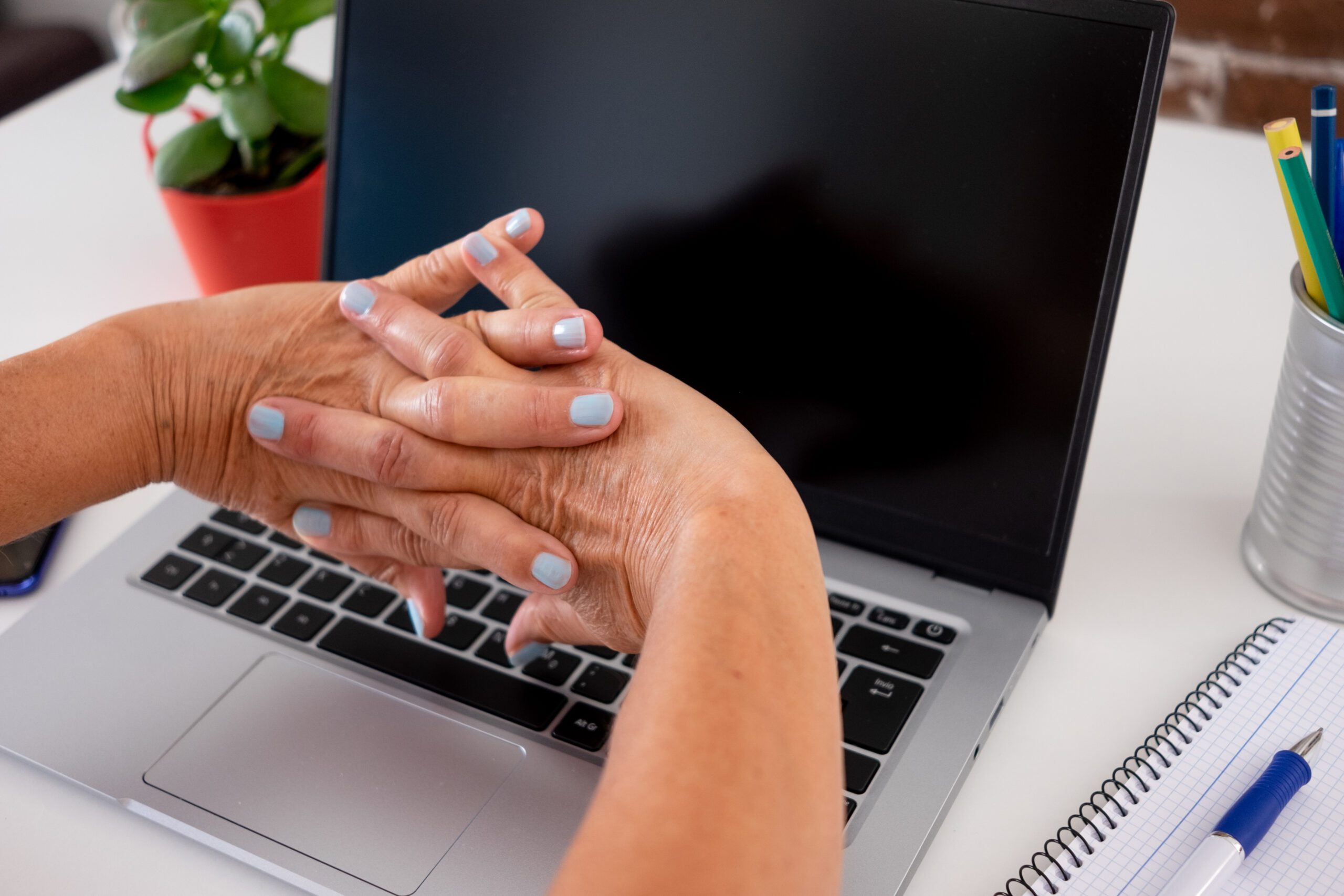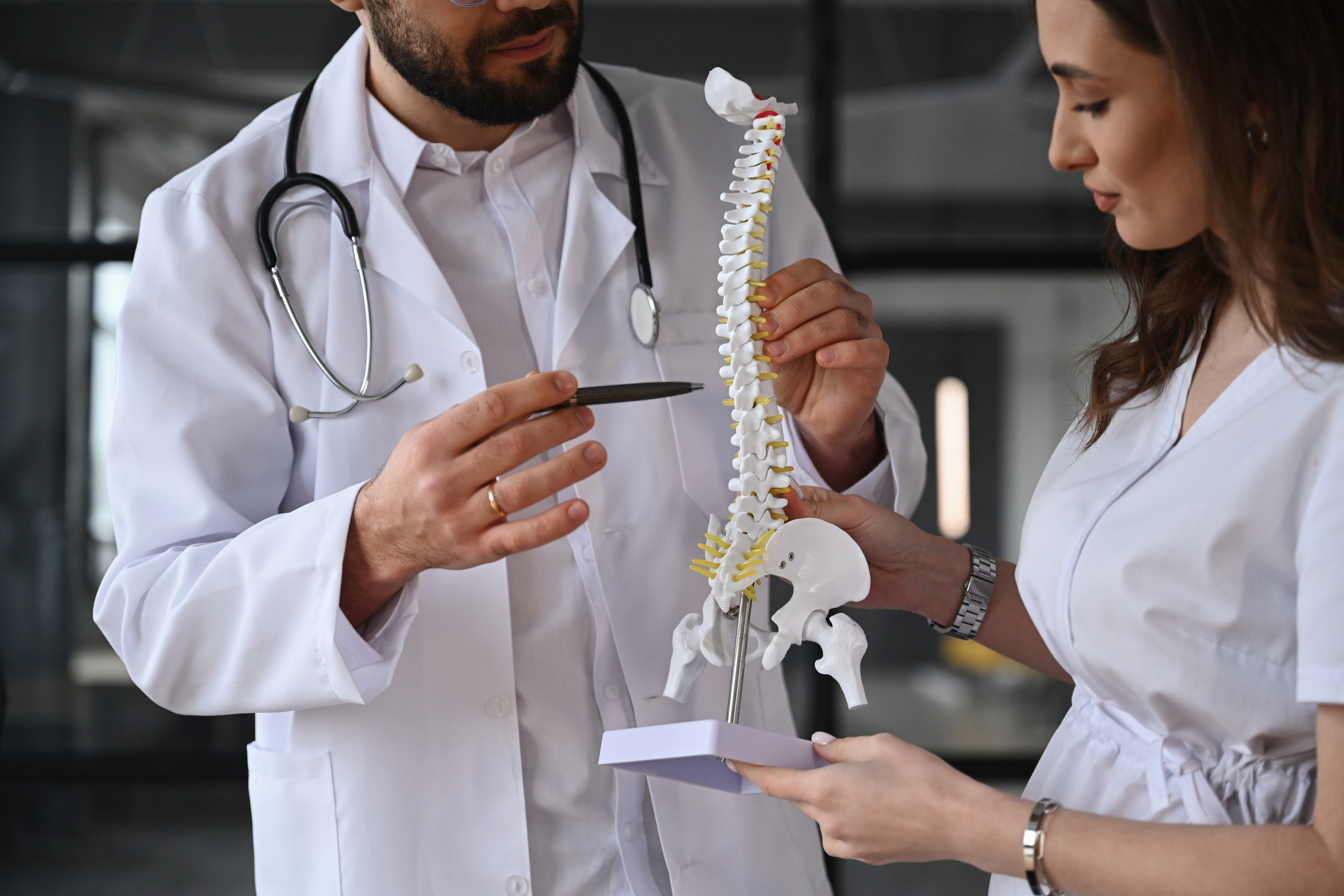Chiropractic Care Insights for Sport Injuries & Sciatica
Understand the role of chiropractic care in treating sport injuries & sciatica for improved comfort and mobility.
Understanding Sciatica Pain: How Chiropractic Care and Holistic Treatments Can Help
Sciatica pain can sneak up on you like an uninvited guest who decides to crash on your couch for weeks, zapping you with discomfort from your lower back all the way down your leg. It’s not just a little twinge—it can make simple tasks like sitting, walking, or even bending over to grab your dropped keys feel like running a marathon with a backpack full of bricks. For active folks in El Paso, TX, especially athletes, sciatica can be a real party pooper, often triggered by sports injuries or accidents. But don’t worry, there’s hope! At ChiroMed – Integrated Medicine in El Paso, Dr. Alexander Jimenez, DC, APRN, FNP-C, a board-certified Family Nurse Practitioner and Chiropractor, leads a team dedicated to kicking sciatica to the curb with holistic, patient-centered care.
In this comprehensive guide, we’ll dive deep into what sciatica is, why it happens, and how sports injuries can play a starring role in its development. We’ll explore the musculoskeletal system’s role in sciatica, unpack why chiropractic care is a superhero in relieving pain, and highlight how combining it with other non-surgical treatments can tackle the root causes. Plus, we’ll share practical tips from Dr. Jimenez’s clinical insights to help you make small changes for big results. For those dealing with personal injuries in El Paso, we’ll spotlight Dr. Jimenez’s unique expertise in bridging medical care and legal documentation. With a sprinkle of humor to keep things light and over 5,000 words of SEO-optimized content, this post is your one-stop shop for understanding and managing sciatica pain. Let’s get moving—gently, of course!
What Is Sciatica Pain?
Sciatica isn’t just a fancy word for “ouch, my leg!” It’s a specific condition caused by irritation or compression of the sciatic nerve, the longest nerve in your body, stretching from your lower back through your hips, buttocks, and down each leg. When this nerve gets annoyed, it can cause a range of symptoms, from a mild ache to a sharp, electric-shock-like pain that makes you wince. Think of it like a cranky toddler throwing a tantrum in your nervous system—it demands attention and can make life miserable until you address it.
Sciatica typically affects just one side of the body, and its symptoms can vary from a dull ache to debilitating pain. According to the National Institute of Neurological Disorders and Stroke (2023), sciatica is often linked to issues in the lower spine, such as a herniated disc, spinal stenosis, or even tight muscles pressing on the nerve. But it’s not always a spinal issue—conditions like piriformis syndrome, where a muscle in your buttocks pinches the nerve, can mimic sciatica’s symptoms (Tonley et al., 2020).
Common Symptoms of Sciatica
- Sharp, shooting pain from the lower back to the leg
- Tingling or “pins and needles” sensation in the leg or foot
- Numbness or weakness in the affected leg
- Pain that worsens with sitting, coughing, or sneezing
- Trouble standing or walking for long periods
If you’re thinking, “That sounds like my back after I tried to channel my inner Olympian at the gym,” you’re not alone. Sciatica can strike anyone, but it’s especially common among active individuals or those who’ve experienced trauma, like a sports injury or accident.
References
- National Institute of Neurological Disorders and Stroke. (2023). Sciatica. PubMed. https://pubmed.ncbi.nlm.nih.gov/
- Tonley, J. C., Yun, S. M., Kochevar, R. J., Dye, J. A., Farrokhi, S., & Powers, C. M. (2020). Piriformis syndrome: A cause of nondiscogenic sciatica. Current Sports Medicine Reports, 19(2), 90–95. https://pubmed.ncbi.nlm.nih.gov/32028359/
Causes of Sciatica Pain and the Role of Sports Injuries
Sciatica doesn’t just show up to ruin your day for no reason—it’s usually triggered by something irritating the sciatic nerve. Let’s unpack the main culprits and zoom in on how sports injuries, in particular, can set the stage for this pesky condition.
Common Causes of Sciatica
- Herniated or Bulging Discs: The discs in your spine are like jelly-filled cushions between your vertebrae. When one gets damaged or slips out of place, it can press on the sciatic nerve, causing pain. This is one of the most common causes of sciatica (Lewis et al., 2022).
- Spinal Stenosis: This happens when the spinal canal narrows, squeezing the nerves, including the sciatic nerve. It’s like trying to navigate a crowded hallway during a school fire drill—nobody’s happy.
- Piriformis Syndrome: The piriformis muscle in your buttocks can tighten or spasm, pinching the sciatic nerve. This sneaky condition often gets mistaken for other issues (Tonley et al., 2020).
- Obesity: Extra body weight puts stress on your spine, increasing the risk of disc issues and sciatica (Zhang et al., 2021).
- Trauma or Injury: A fall, car accident, or sports injury can misalign your spine or pelvis, leading to nerve compression. For example, a broken pelvis from a high-impact sports injury can directly contribute to sciatica (El Paso Back Clinic, 2023).
- Poor Posture or Muscle Imbalances: Sitting like a slouchy potato at your desk or overworking one side of your body during sports can throw your spine out of alignment, irritating the sciatic nerve.
How Sports Injuries Contribute
If you’re an athlete or a weekend warrior in El Paso, you know sports like football, soccer, or running can be tough on your body. A sudden tackle, an awkward landing, or repetitive strain can lead to injuries that trigger sciatica. For instance, a broken pelvis, as highlighted in a case study from El Paso Back Clinic, can cause severe low back pain and sciatica due to misalignment or inflammation pressing on the sciatic nerve (El Paso Back Clinic, 2023). Similarly, repetitive motions in sports like tennis or golf can strain muscles like the piriformis, leading to nerve irritation.
Sports injuries often involve:
- Muscle Strains: Overstretching or tearing muscles in the lower back or hips can cause inflammation that irritates the sciatic nerve.
- Joint Misalignment: A hard hit or fall can shift your pelvis or spine, pinching the nerve.
- Soft Tissue Damage: Sprains or bruises in the lower back or buttocks can lead to swelling that compresses the sciatic nerve.
Your body is like a finely tuned sports car—when one part gets banged up, the whole system can sputter. That’s where chiropractic care swoops in to save the day (or at least your back).
References
- El Paso Back Clinic. (2023). Low back pain & sciatica caused by a broken pelvis. https://elpasobackclinic.com/low-back-pain-sciatica-caused-broken-pelvis/
- Lewis, R. A., Williams, N. H., Sutton, A. J., Burton, K., Din, N. U., Matar, H. E., … & Wilkinson, C. (2022). Surgical versus non-surgical treatment for sciatica: Systematic review and meta-analysis of randomised controlled trials. BMJ, 377, e067517. https://pubmed.ncbi.nlm.nih.gov/35508324/
- Tonley, J. C., Yun, S. M., Kochevar, R. J., Dye, J. A., Farrokhi, S., & Powers, C. M. (2020). Piriformis syndrome: A cause of nondiscogenic sciatica. Current Sports Medicine Reports, 19(2), 90–95. https://pubmed.ncbi.nlm.nih.gov/32028359/
- Zhang, Y., Zhang, T., Liu, X., & Ding, Q. (2021). Causal associations of obesity with intervertebral degeneration, low back pain, and sciatica: A two-sample Mendelian randomization study. Frontiers in Endocrinology, 12, 777096. https://pubmed.ncbi.nlm.nih.gov/34938269/
The Musculoskeletal System and Sciatica: What’s the Connection?
Your musculoskeletal system—made up of bones, muscles, ligaments, and tendons—is like the scaffolding of a building. If the structure’s off, the whole thing can wobble. Sciatica often stems from problems in this system, especially when the spine, pelvis, or surrounding muscles are misaligned or inflamed.
The Role of the Musculoskeletal System
The sciatic nerve runs through a complex network of muscles and bones in your lower back and pelvis. When something disrupts this network—like a misaligned vertebra, a tight muscle, or a fractured bone—the nerve can get pinched or irritated. Here’s how different parts of the musculoskeletal system play a role:
- Spine: Misaligned vertebrae or herniated discs can press on the sciatic nerve roots.
- Pelvis: A tilted or injured pelvis, like from a sports injury, can alter the nerve’s pathway, causing irritation (El Paso Back Clinic, 2023).
- Muscles: Tight or inflamed muscles, like the piriformis or hamstrings, can squeeze the sciatic nerve.
- Joints: Stiff or unstable joints in the lower back or hips can contribute to nerve compression.
Overlapping Risk Profiles
Sciatica doesn’t exist in isolation—it’s often linked to other musculoskeletal issues that amplify the pain. For example:
- Chronic Low Back Pain: Often coexists with sciatica due to shared causes like disc herniation or spinal misalignment.
- Muscle Imbalances: Weak core muscles or tight hip flexors can pull your spine out of alignment, increasing sciatica risk.
- Joint Dysfunction: Stiff sacroiliac joints or facet joints in the spine can contribute to nerve irritation.
- Inflammation: Injuries or overuse can cause swelling that presses on the sciatic nerve.
Athletes are particularly prone to these issues because of the repetitive stress and high-impact nature of sports. A soccer player who twists awkwardly or a runner with poor form can easily develop muscle imbalances or joint issues that lead to sciatica.
References
- El Paso Back Clinic. (2023). Low back pain & sciatica caused by a broken pelvis. https://elpasobackclinic.com/low-back-pain-sciatica-caused-broken-pelvis/
Why Chiropractic Care Works for Sciatica Pain
Chiropractic care is like the superhero of non-surgical treatments for sciatica—it swoops in to realign your spine, ease nerve pressure, and get you back to feeling like yourself. Dr. Alexander Jimenez at ChiroMed – Integrated Medicine uses evidence-based chiropractic techniques to address the root causes of sciatica, not just the symptoms.
The Clinical Rationale for Chiropractic Care
Chiropractic care focuses on restoring proper alignment to the spine and pelvis, which can relieve pressure on the sciatic nerve. Research shows that spinal manipulation, a cornerstone of chiropractic treatment, can reduce the need for invasive procedures like lumbar discectomy in patients with disc herniation and sciatica (McMorland et al., 2022). Here’s why it works:
- Spinal Adjustments: By gently realigning the spine, chiropractors can reduce pressure on the sciatic nerve caused by misaligned vertebrae or discs.
- Improved Mobility: Adjustments help restore joint function, reducing stiffness and improving range of motion.
- Reduced Inflammation: Chiropractic care can decrease inflammation around the nerve, easing pain and discomfort.
- Muscle Relaxation: Techniques like soft tissue therapy can release tension in muscles like the piriformis, which may be pinching the nerve.
Dr. Jimenez combines these techniques with a holistic approach, ensuring that treatments are tailored to each patient’s unique needs. For example, if your sciatica stems from a sports injury like a broken pelvis, he might use specific adjustments to correct pelvic misalignment while incorporating rehabilitation exercises to strengthen supporting muscles (El Paso Back Clinic, 2023).
Evidence Supporting Chiropractic Care
A retrospective study found that chiropractic spinal manipulation was associated with a lower likelihood of needing surgery for lumbar disc herniation, highlighting its effectiveness as a non-invasive option (McMorland et al., 2022). Plus, chiropractic care is often more cost-effective and has fewer risks than surgical interventions, making it a win-win for patients.
References
- El Paso Back Clinic. (2023). Low back pain & sciatica caused by a broken pelvis. https://elpasobackclinic.com/low-back-pain-sciatica-caused-broken-pelvis/
- McMorland, G., Suter, E., Casha, S., du Plessis, S. J., & Hurlbert, R. J. (2022). Association between chiropractic spinal manipulation and lumbar discectomy in adults with lumbar disc herniation and radiculopathy: Retrospective cohort study using United States’ data. Journal of Manipulative and Physiological Therapeutics, 45(3), 167–174. https://pubmed.ncbi.nlm.nih.gov/35780068/
Non-Surgical Treatments to Complement Chiropractic Care
Chiropractic care is fantastic, but it’s even better when paired with other non-surgical treatments to tackle sciatica from every angle. At ChiroMed, Dr. Jimenez and his team offer a range of therapies to create a comprehensive treatment plan. Here are some key players:
1. Acupuncture
Acupuncture is like giving your body a gentle nudge to heal itself. By inserting tiny needles into specific points, it can reduce pain and inflammation around the sciatic nerve. Studies suggest acupuncture can be effective for sciatica, especially when tailored to neuropathic pain mechanisms (Qiu et al., 2020; Zhang et al., 2021).
2. Physical Therapy
Physical therapy is like a personal trainer for your spine. It strengthens core muscles, improves flexibility, and corrects posture to prevent future sciatica flare-ups. Therapists at ChiroMed, like Kristina Castle, design exercises to support chiropractic adjustments and promote long-term recovery.
3. Massage Therapy
Massage therapy, offered by professionals like Helen Wilmore at ChiroMed, can loosen tight muscles like the piriformis, reducing nerve compression. It’s like giving your muscles a mini-vacation from all the tension they’re holding.
4. Nutrition Counseling
What you eat can affect inflammation in your body. Nutrition counseling at ChiroMed helps patients adopt anti-inflammatory diets to support healing and reduce sciatica symptoms. Think less fast food and more veggies—your sciatic nerve will thank you.
5. Rehabilitation
Rehabilitation programs focus on restoring function after an injury. For athletes with sciatica from a sports injury, rehab can include targeted exercises to rebuild strength and prevent re-injury.
Research Support
A systematic review found that non-surgical treatments, including chiropractic care and acupuncture, are effective for managing sciatica, often outperforming surgery in terms of recovery time and patient satisfaction (Lewis et al., 2022). Combining these therapies creates a synergistic effect, addressing both the symptoms and underlying causes of sciatica.
References
- Lewis, R. A., Williams, N. H., Sutton, A. J., Burton, K., Din, N. U., Matar, H. E., … & Wilkinson, C. (2022). Surgical versus non-surgical treatment for sciatica: Systematic review and meta-analysis of randomised controlled trials. BMJ, 377, e067517. https://pubmed.ncbi.nlm.nih.gov/35508324/
- Qiu, T., Li, L., & Zhang, Y. (2020). The management of sciatica by acupuncture: An expert consensus using the improved Delphi survey. Evidence-Based Complementary and Alternative Medicine, 2020, 8210536. https://pubmed.ncbi.nlm.nih.gov/33123203/
- Zhang, Y., Liu, Y., & Wang, J. (2021). Therapeutic efficacy and the impact of the “dose” effect of acupuncture to treat sciatica: A randomized controlled pilot study. Journal of Pain Research, 14, 351–360. https://pubmed.ncbi.nlm.nih.gov/33542653/
Sports Injury Rehabilitation- Video
Small Changes for Big Results: Insights from Dr. Alexander Jimenez
Dr. Alexander Jimenez isn’t just a chiropractor—he’s a wellness wizard who believes small changes can lead to big improvements in your health. Drawing from his expertise at ChiroMed (ChiroMed, 2023) and insights shared on his LinkedIn profile (Jimenez, 2023), here are some practical tips to reduce sciatica risk and support recovery:
- Stretch Daily: Incorporate gentle stretches for your hamstrings, hip flexors, and lower back to keep muscles loose and prevent nerve compression. Try a seated piriformis stretch—it’s like giving your buttocks a friendly wake-up call.
- Mind Your Posture: Sit up straight and avoid slouching like you’re auditioning for a role as a question mark. Use an ergonomic chair or a lumbar support pillow at work.
- Stay Active: Low-impact exercises like walking or swimming can keep your spine happy without aggravating sciatica. Avoid high-impact activities until you’re cleared by a professional.
- Strengthen Your Core: A strong core is like armor for your spine. Simple exercises like planks or bird-dogs can stabilize your lower back.
- Manage Weight: Maintaining a healthy weight reduces stress on your spine. Dr. Jimenez often emphasizes anti-inflammatory diets to keep excess pounds at bay (ChiroMed, 2023).
- Use Proper Form in Sports: If you’re an athlete, work with a coach to ensure proper technique. Bad form is like inviting sciatica to the party.
These small tweaks can prevent sciatica from crashing your daily routine and support long-term musculoskeletal health.
References
- ChiroMed – Integrated Medicine. (2023). Services. https://chiromed.com/
- Jimenez, A. (2023). LinkedIn profile. https://www.linkedin.com/in/dralexjimenez/
Dr. Alexander Jimenez: A Trusted Practitioner for Personal Injury Cases in El Paso
In El Paso, personal injury cases—like those from car accidents, workplace incidents, or sports injuries—are all too common. Sciatica often rears its head in these cases, especially when trauma like a broken pelvis or spinal misalignment is involved (El Paso Back Clinic, 2023). That’s where Dr. Alexander Jimenez shines as a distinguished practitioner.
Why Dr. Jimenez Stands Out
Dr. Jimenez isn’t just a chiropractor—he’s a dual-licensed professional with expertise as a Family Nurse Practitioner, making him uniquely qualified to handle complex injury cases. His approach involves:
- Advanced Imaging: Using X-rays, MRIs, or CT scans to pinpoint the exact cause of sciatica, such as a herniated disc or pelvic misalignment.
- Diagnostic Evaluations: Thorough assessments to identify musculoskeletal and neurological issues contributing to pain.
- Dual-Scope Procedures: Combining chiropractic adjustments with medical interventions to address both structural and soft tissue damage.
Dr. Jimenez also acts as a liaison between medical care and legal documentation, ensuring that personal injury victims have the evidence needed for their cases. Whether it’s a car accident causing sciatica or a sports injury like a broken pelvis, he provides detailed reports that bridge the gap between healthcare and legal proceedings, making him a trusted ally for patients in El Paso.
References
- El Paso Back Clinic. (2023). Low back pain & sciatica caused by a broken pelvis. https://elpasobackclinic.com/low-back-pain-sciatica-caused-broken-pelvis/
Integrating Care for Optimal Recovery
At ChiroMed, the magic happens when chiropractic care, acupuncture, physical therapy, and nutrition counseling work together like a well-rehearsed band. This integrated approach addresses the overlapping risk profiles of sciatica—muscle imbalances, inflammation, joint dysfunction, and more—ensuring a comprehensive recovery plan. For athletes, this means getting back to the field faster; for personal injury victims, it means regaining quality of life without invasive procedures.
Tips for Patients
- Communicate Openly: Tell your healthcare provider about all symptoms, even the ones that seem minor, like a slight tingle in your foot.
- Follow Through: Stick to your treatment plan, whether it’s attending therapy sessions or doing at-home exercises.
- Be Patient: Recovery takes time, but consistent care can lead to lasting relief.
Conclusion
Sciatica pain may feel like an uninvited guest, but with the right care, you can show it the door. Chiropractic care, led by experts like Dr. Alexander Jimenez at ChiroMed – Integrated Medicine, offers a powerful, non-surgical solution to relieve sciatica and address its root causes. By combining spinal adjustments with therapies like acupuncture, physical therapy, and nutrition counseling, patients in El Paso can find relief and reclaim their active lifestyles. For personal injury victims, Dr. Jimenez’s expertise in advanced imaging, diagnostics, and legal documentation makes him a trusted partner in navigating recovery and legal processes.
Serious Note and Disclaimer: This blog post is intended for informational purposes only and should not be considered medical advice. Sciatica and related conditions require professional evaluation and treatment. Always consult a qualified healthcare provider, such as a chiropractor or physician, before starting any treatment plan. The information provided here is based on reputable sources and clinical insights but is not a substitute for personalized medical care. For specific concerns about sciatica or personal injuries, contact ChiroMed – Integrated Medicine at +1 (915) 412-6680 or support@chiromed.com to schedule a consultation.
Full Reference List
- ChiroMed – Integrated Medicine. (2023). Services. https://chiromed.com/
- El Paso Back Clinic. (2023). Low back pain & sciatica caused by a broken pelvis. https://elpasobackclinic.com/low-back-pain-sciatica-caused-broken-pelvis/
- Jimenez, A. (2023). LinkedIn profile. https://www.linkedin.com/in/dralexjimenez/
- Lewis, R. A., Williams, N. H., Sutton, A. J., Burton, K., Din, N. U., Matar, H. E., … & Wilkinson, C. (2022). Surgical versus non-surgical treatment for sciatica: Systematic review and meta-analysis of randomised controlled trials. BMJ, 377, e067517. https://pubmed.ncbi.nlm.nih.gov/35508324/
- McMorland, G., Suter, E., Casha, S., du Plessis, S. J., & Hurlbert, R. J. (2022). Association between chiropractic spinal manipulation and lumbar discectomy in adults with lumbar disc herniation and radiculopathy: Retrospective cohort study using United States’ data. Journal of Manipulative and Physiological Therapeutics, 45(3), 167–174. https://pubmed.ncbi.nlm.nih.gov/35780068/
- National Institute of Neurological Disorders and Stroke. (2023). Sciatica. PubMed. https://pubmed.ncbi.nlm.nih.gov/
- Qiu, T., Li, L., & Zhang, Y. (2020). The management of sciatica by acupuncture: An expert consensus using the improved Delphi survey. Evidence-Based Complementary and Alternative Medicine, 2020, 8210536. https://pubmed.ncbi.nlm.nih.gov/33123203/
- Tonley, J. C., Yun, S. M., Kochevar, R. J., Dye, J. A., Farrokhi, S., & Powers, C. M. (2020). Piriformis syndrome: A cause of nondiscogenic sciatica. Current Sports Medicine Reports, 19(2), 90–95. https://pubmed.ncbi.nlm.nih.gov/32028359/
- Zhang, Y., Liu, Y., & Wang, J. (2021). Therapeutic efficacy and the impact of the “dose” effect of acupuncture to treat sciatica: A randomized controlled pilot study. Journal of Pain Research, 14, 351–360. https://pubmed.ncbi.nlm.nih.gov/33542653/
- Zhang, Y., Zhang, T., Liu, X., & Ding, Q. (2021). Causal associations of obesity with intervertebral degeneration, low back pain, and sciatica: A two-sample Mendelian randomization study. Frontiers in Endocrinology, 12, 777096. https://pubmed.ncbi.nlm.nih.gov/34938269/





